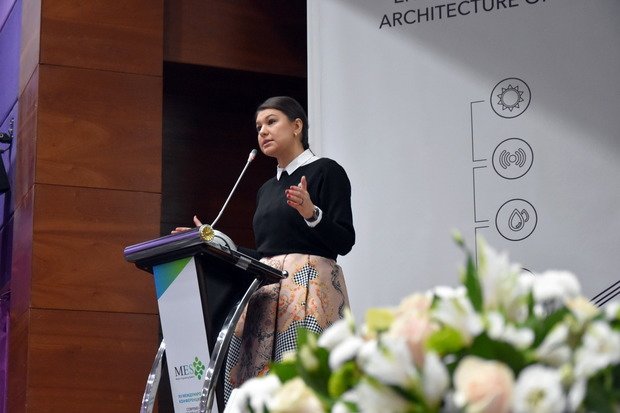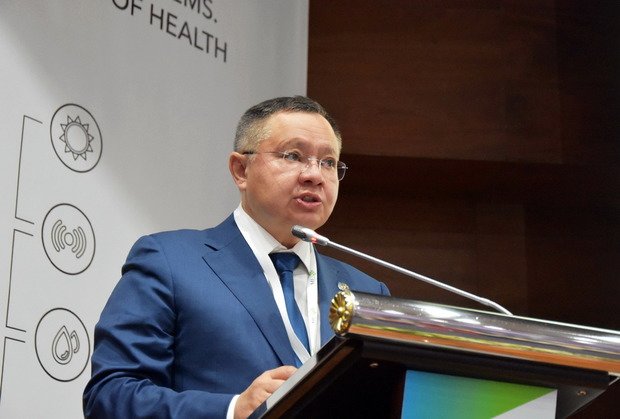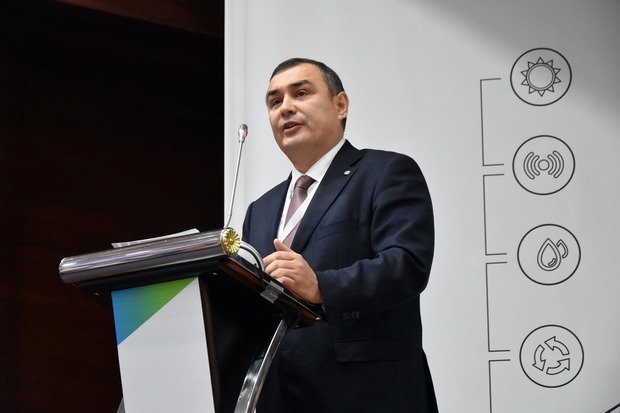MES-2018: about search for investors, MRI and how not to see a doctor at all
Functionaries and experts want to build private clinics, while patients don’t have money on their services
It was told how to develop private and public partnership when constructing medical centres and how to maintain the infrastructure of big medical establishments in the future at the 12 th international conference on architecture and construction of health centres, which was in Kazan. But, as it turned out, while experts looked for investors and talked about robots and 3D organs, ordinary patients complained that it took six months to have an appointment for analysis, while they didn't have money on services in private clinics.
''The budget is the problem, of course''
It was possible to see a doctor performing cuts on a human organ on two screens at once in front of the entrance to the conference hall. Sun Com company from Kazan decided to make such a presentation at the exhibition in the hall of Grand Hotel. It seemed that the exhibition was to acquaint the participants with novelties in medical technologies before the plenary session began. ICL, for instance, presented a black suitcase full of medical devices on its stand – one could see a blood pressure monitor, small ECG equipment, an X-ray device. The producer itself offers to equip, for instance, plans with such suitcases to provide medical help quickly.
President and Director General of Centre for Health Design Debra Levin and President of Hosser GC from Saint Petersburg Sergey Furmanchuk moderated the plenary session. Tatarstan functionaries delivered a speech first. Director of the Investment Development Agency Taliya Minullina decided to start her speech with personal information.
''I've woken up in the morning today, looked at the schedule of the day. And the question I asked myself was how many years I wanted to live. Perhaps each of us asks this question once and does it many times. <...> I know this hall has people who can make a contribution in order to live not only long but happily.''
So Minullina curtsied to participants of the conference who were responsible for construction, design, use and reconstruction of health facilities.

Then it was the turn of the speech's informative part. According to the IDA's director, over 30bn rubles have been allocated to construct and update health establishments in Tatarstan. The money is spent to construct rural health centres, outpatient clinics, ambulance posts. A programme aimed to repair and equip 197 clinics of Tatarstan was to end in 2018. In addition, Minullina noted it was planned to create another two cardiovascular centres, reconstruct the regional oncological hospital, construct branches of the hospital in Naberezhnye Chelny and Almetyevsk, build an onco-haematology centre for kids.
In answer to moderator Sergey Furmanchuk's question about what helped to attract investors to health projects, Taliya Minullina named two federal laws. The first one is the Federal Law No. 115 on concession agreements. She said the construction of Ava Peter centre was a successful example. The secondly one is the new Federal Law No. 224 on public and private partnership. Here a sports complex in Naberezhnye Chelny became an example where an investor got a land parcel on concessional terms. Apart from the fulfilment of the project itself, he was to improve the neighbouring territory and let some groups of the population enter according to a timetable.
''The budget is the problem, of course, because, as a rule, this money returns through the compulsory medical insurance system, which presupposes specific costs. Like the law on public and private partnership, it compulsorily must have regional programmes when the budget has money for an investor to compensate.''
The IDA director explained not all regions had programmes and money for financing. A small amount of successful cases is another factor that stops investors.
''How should a modern medical building look? Does it need to be pretentiously beautiful?''
Minister of Construction, Architecture, Housing and Utilities Irek Fayzullin gave other several examples of public and private partnership. He particularly told that the construction project of Mother and Child medical centre kicked off in Kazan. It should be reminded we mean a private multifunctional clinic. A parcel near the Republican Clinical Hospital was allocated for it. The declared volume of investments totals 3,2bn rubles.
The modernisation of the railway clinic with Russian Railways and the construction of a big medical centre on the Kazan River bank together with Tatneft are another two examples of successful partnership Fayzullin called. Its area will amount to over 20,000 square metres.

Talking about the numbers the minister provided, 42 rural health centres, 5 anatomical pathology departments were built in 2017. There have been constructed 44 rural health centres and 11 laboratories in 2018. In addition, medical establishments are reconstructed and have a major overhaul. So it's planned to spend 3,5bn rubles on it in 2018.
''As I imagine, technologies will change dramatically. And there is a question here as well – how should a modern medical building look from an architectural perspective considering that equipment inside changes very fast. Does it need to be pretentiously beautiful or does it need to be a modular facility? It's a matter of discussions here. Perhaps, one should save on construction and assembly works but equip these facilities in a more modern way,'' the minister noted.
Patients say: ''An ordinary person can't go to such establishments''
The part dedicated to the world of the Interregional Clinical and Diagnostic Centre was quite interesting. Asked by the moderator about how it was possible to maintain the ICDC in an excellent state given growth in tariffs and lack of money, its director Rustem Khairullin noted two factors. Firstly, it's support of the Ministry of Health and the government of Tatarstan.
''Such a facility as the ICDC is one of the most expensive even in energy expenses. 136 KW of energy is spent per 1 square of metre in this establishment. For instance, it's just 76 KW in the RCH and Urban Hospital No. 7. This indicator makes our establishment different in equipment and energy expenses. And of course, the maintenance of such a level is impossible without the support of the government,'' Khairullin said.
''A responsible attitude of the staff that maintains the use at a due level'' is the second factor the ICDC director noted.

According to the programme, the next speech was delivered by a citizen of Chelny who was receiving treatment in the ICDC. To be honest, the author of these lines was prepared to listen to an ordinary story with compliments about successful treatment with words of gratitude that were to gladden the people present. However, Maksud Rakhmatullin decided to mention rough edges, and his cry didn't leave the participants indifferent – they remembered him after the plenary session, in a talk with journalists and when working in sections. The patient praised surgeons of the ICDC and complained about specialists and hospitals of his native city.
''If everyone worked like in the ICDC, patients would be fine. When I went to the Clinic No. 6 in Naberezhnye Chelny, I had to go to the ICDC on my own. I couldn't be diagnosed for the first, second and third time. Now it's said many private clinics are built. An ordinary person can't go to such establishments. I want to have an MRI scan in Naberezhnye Chelny, I turned to the deputy head doctor. She said to me: ''We're given one-two free appointments a month,'' Rakhmatullin told.
His turn to have an MRI scan was six months later. At this moment, the moderator decided to interfere in the emotional speech of the patient and remind the regulation – like it was possible to tell functionaries about his problems after the plenary session too. But Rakhmatullin wasn't confused and managed to tell despite 40-year experience in a service station, he received just 8,000 rubles of pension. Considering that a half of it is spent to pay the utility bill, there is obviously no money on medical services.
Gadgets and apps as a way not to go to hospital
If Russian functionaries and specialists told about mainly treatment in new clinics, their US colleagues focused on prevention in their speeches.
So Executive Vice-President at HKS Shannon Kraus pointed out the next areas that create the future health of a person: maintenance of health with the help of home appliances, behavioural health (the realisation of how health can be maintained), prevention of diseases. As an example, he showed how he could send an ECG to his doctor. And, of course, all household appliances for health can include all kinds of applications that can count kilometres, burnt calories and so on. It should be noted that many US experts had smartwatches on their hands. In Kraus's opinion, one should start thinking about prevention of diseases and do analyses from the school bench not to go see a doctor at all.
Director of the evidence-based design area at HDR Cyndi McCullough paid attention to the spread of infectious diseases, especially measles, chickenpox, tuberculosis. The reason is that many people don't want to be vaccinated or catch while travelling.